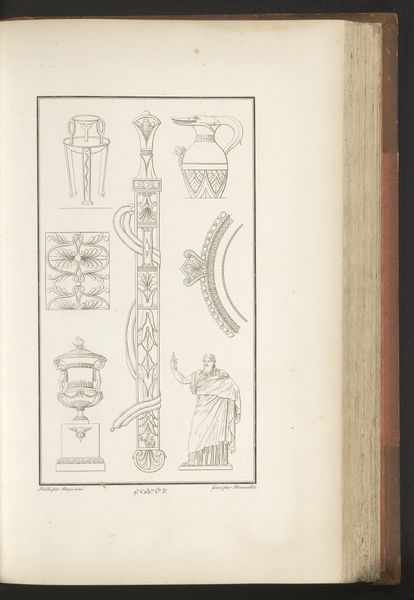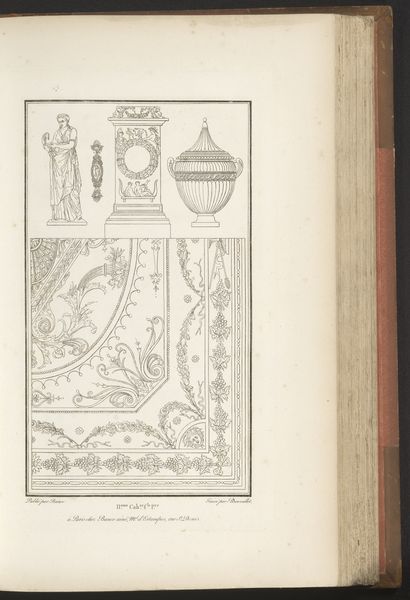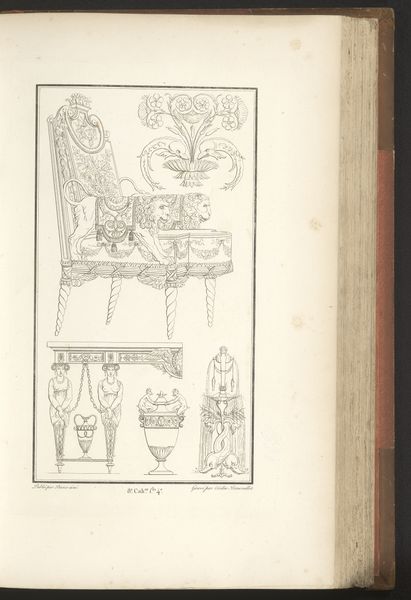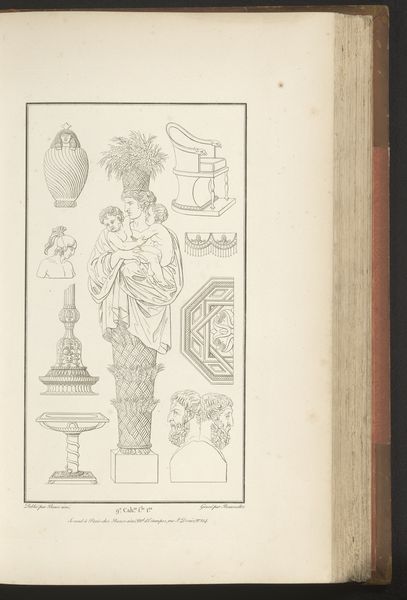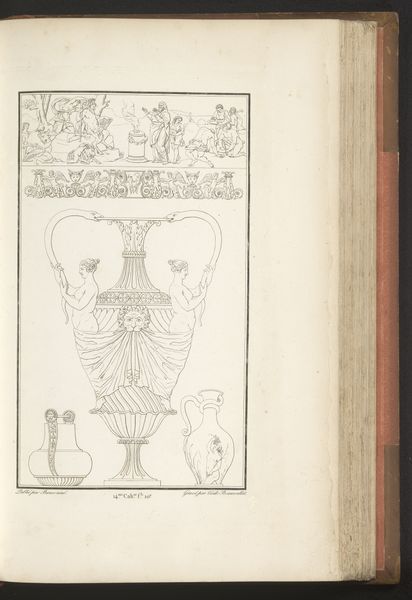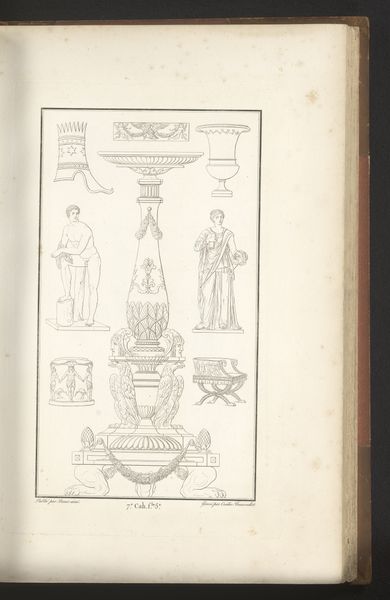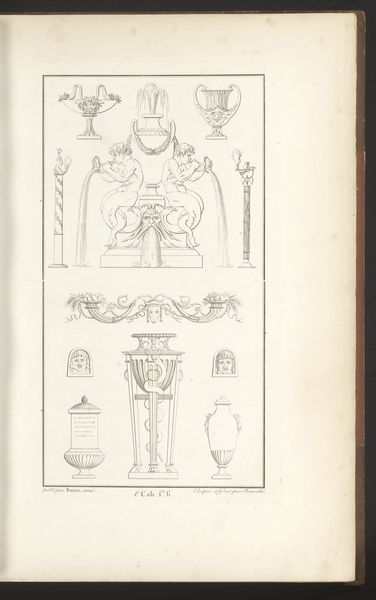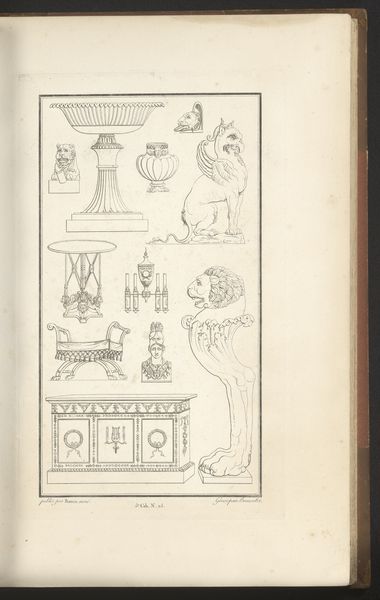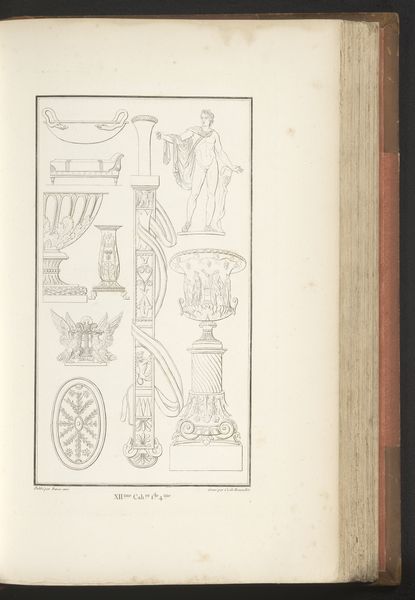
drawing, ornament, paper, ink
#
drawing
#
neoclacissism
#
ornament
#
classical-realism
#
paper
#
form
#
ink
#
geometric
#
line
#
history-painting
#
academic-art
Dimensions: height mm, width mm
Copyright: Rijks Museum: Open Domain
Curator: Here we have “Diverse ornamenten,” an ink drawing on paper by Pierre-Nicolas Beauvallet, dating back to 1820. Editor: The composition strikes me immediately. There's such a fastidious and balanced placement of forms; it gives a sense of both precision and possibility. It's academic art in full display, but, for a drawing, how much of it communicates as a sketch rather than as fully defined form. Curator: Indeed. We're viewing a collection of neoclassical ornaments, drawn with sharp, definitive lines. Observe the variations in rendering. A classical nude contrasts with complex pillar elements, displaying the period's aesthetic ideals. Editor: Speaking of which, considering this piece through a social history lens, I am led to consider the revival of classicism in post-revolutionary Europe. There's a clear message embedded here. These weren't simply decorative forms, but embodied specific sociopolitical and cultural ideals, referencing a 'golden age' of societal structure. Curator: Agreed. There’s an intentional, even didactic use of these motifs. Look at the Corinthian column; its complex decoration suggests wealth, status, power; the proportional rigor offers stability through its strong verticality. Then consider the urns. Editor: Quite! Given its presence within a drawing book of the time, what can you discern in terms of accessibility to various demographics, social classes, etc.? These images were used by architects, decorators and other artisans of the day as templates, reinforcing the aesthetic values within a broader culture through everyday things. Curator: That highlights how artistic knowledge and production are often deeply entwined with social hierarchies. We move into abstraction via repetition in terms of how form supersedes cultural content through lines. The image begins to resolve into various discrete marks and units. Editor: Reflecting on that, I recognize now the tension between Beauvallet’s classic forms with revolution-era aesthetics. And by reproducing classic works like the pillars, his image reflects the cultural aspirations of those commissioning this visual lexicon, linking back to ideals from Greek civilization. Curator: I come away seeing art’s constant pull to look simultaneously backward and forward. An artist's technical and aesthetic skill has made these timeless forms vital, through line, shadow and pure presence. Editor: And I see it is a reminder of how art engages in and reshapes the ongoing story of culture and ambition.
Comments
No comments
Be the first to comment and join the conversation on the ultimate creative platform.
